A few days ago talking with my dear friend @abneagro, we commented that the rainy season is when you see some beetles. There are some that I do not like very much that is named "coquitos" (Phyllophaga crinita) because they can fly and enter the house in large numbers and are distributed everywhere 😖😖😖😖.
Our conversation focused on the morphology of these insects and that there are some as curious as to the rhinoceros beetle. A genus that my friend @abneagro told me I hadn't seen for a while, but guess what happened to me?... a few days later, I found two rhinoceros beetles, so today, I share some beautiful pics of this peculiar insect.
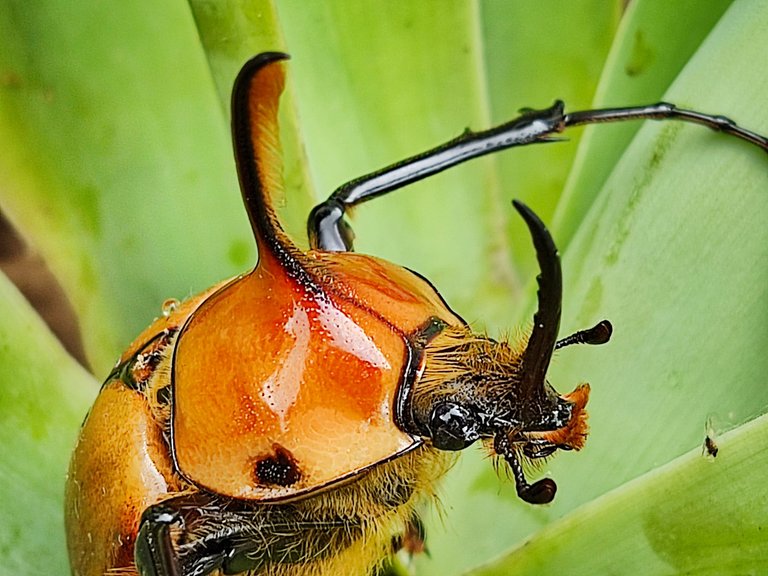
The scientific name of this type of beetle is Golofa porteri. It is a horned beetle, so some people call it a bull beetle or rhinoceros beetle.
They are found in some forested areas of Central America and the northern part of South America. They proliferate in a tropical or temperate climate. Their life cycle includes egg, larval, pupal, and adult stages. The larvae feed on decomposing organic matter found in the soil (humus). The adults feed only on the softest parts of plants and their sap.

One morning, as I was leaving my house, I saw a lump on the floor in the shape of a ball. When I got closer I saw that it was a beetle, but it wasn't just any beetle, it was the beetle I was looking forward to seeing.
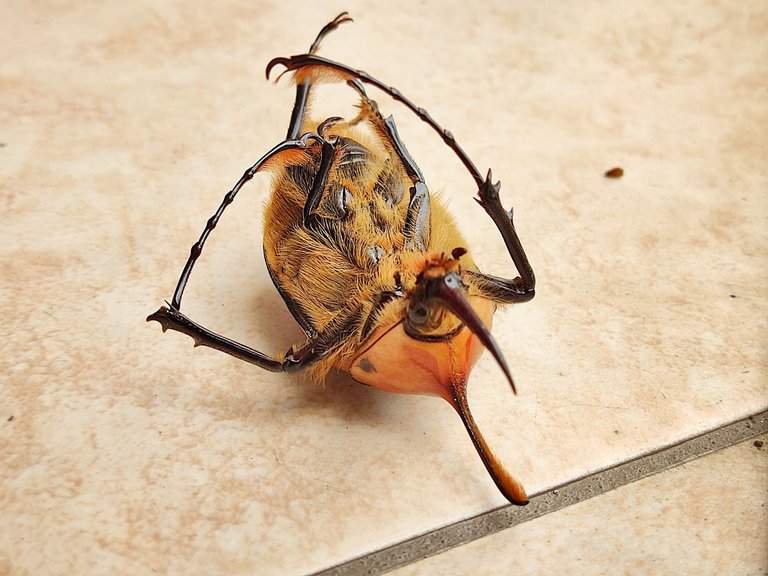
The beetle was on its back with its legs attached to its torso. I think it was dead. Carefully, with the help of a dry branch, I moved it, and it began to stretch its legs. I checked for abdominal injuries and turned it over.
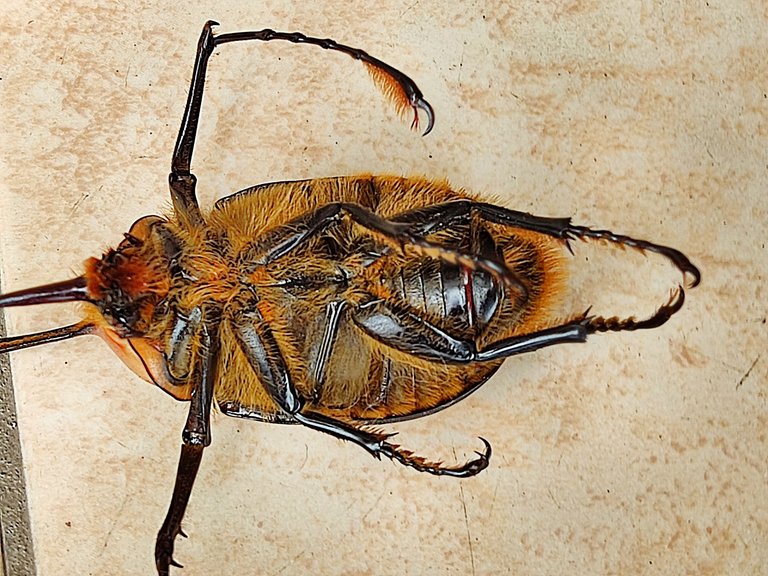
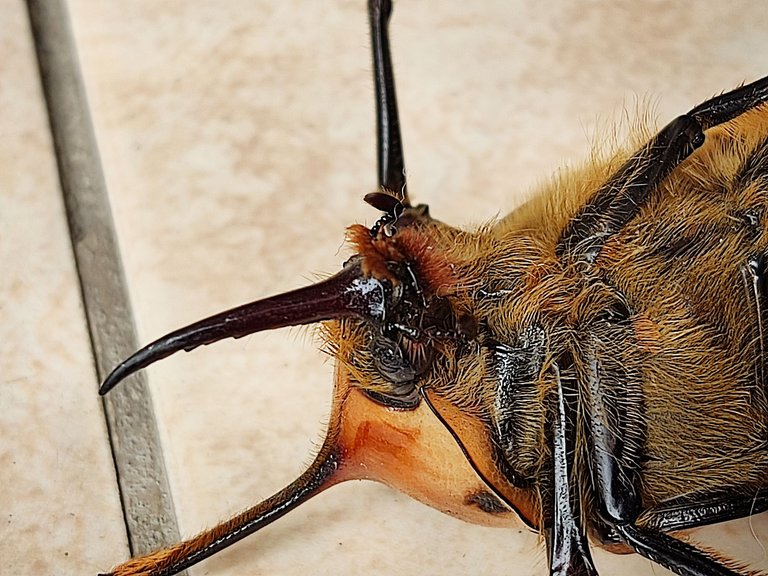
At first, it tried to stand up, but the polished surface of the floor made it slip. I think it was also a bit exhausted. I don't know how many hours this insect was trying to roll over from the upside-down position.
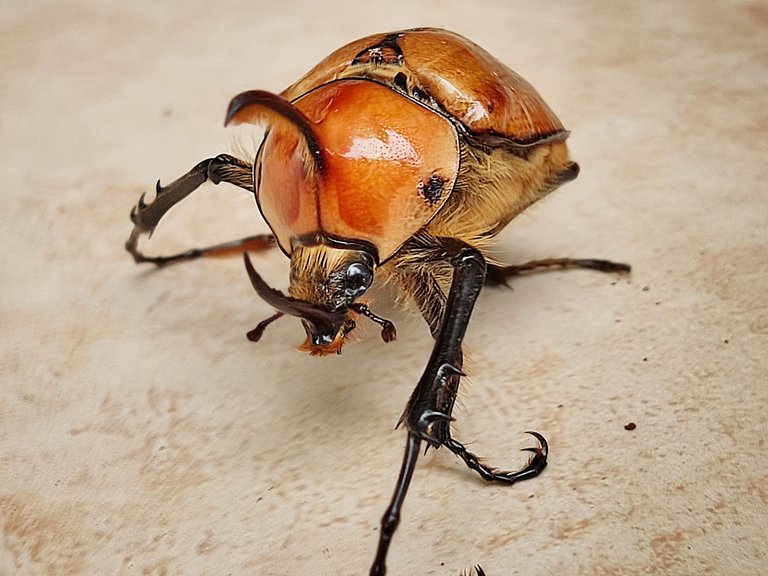
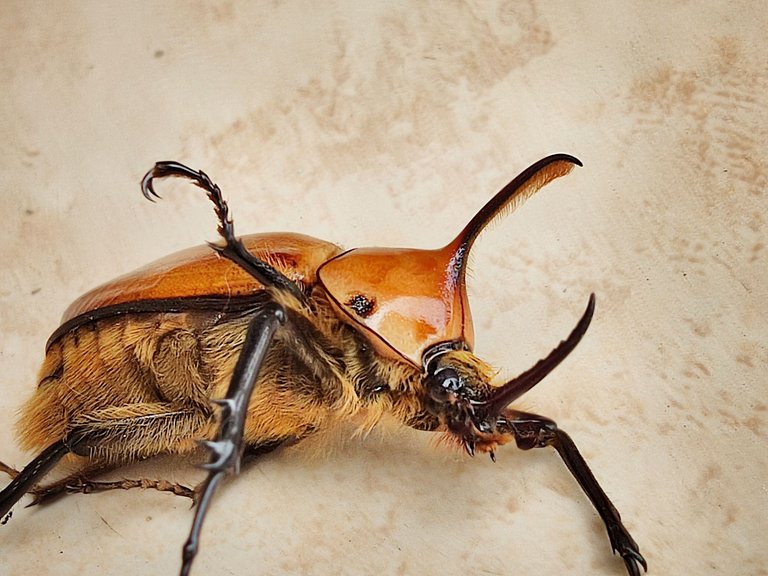
When it tried a second time to get up, I could see its legs were full, so maybe the beetle was a little weak and needed to be on a surface to help it move.
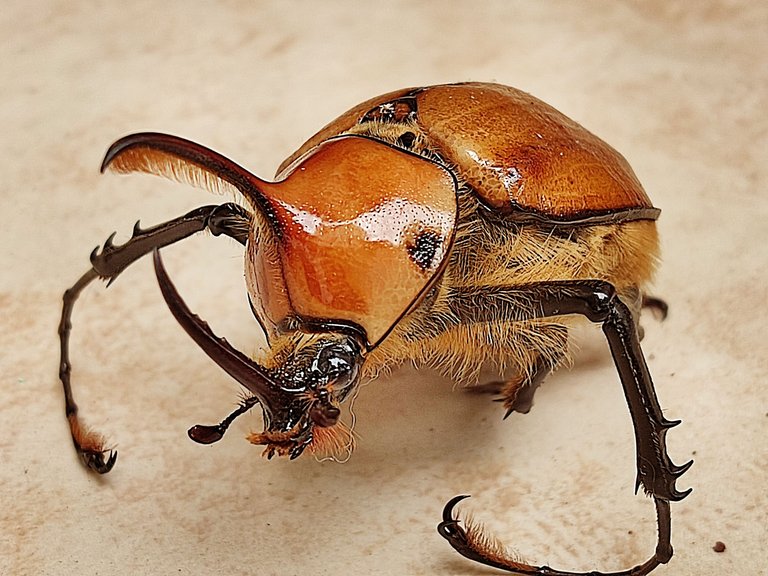
My husband carefully moved it to the garden and placed it on a funnel-shaped plant (bromeliad), so we could observe if the beetle was able to recover its movements. If the beetle was exhausted, it was suspended and did not have to exert much effort.
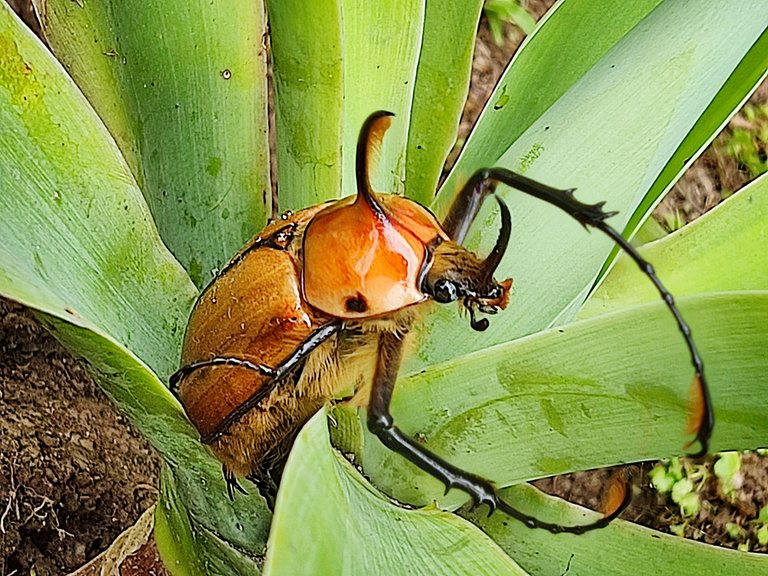
You may say it was a figment of my imagination, but this beetle was looking at me with a questioning and wary face at the same time. Maybe I was thinking, What kind of predator is this? What's going to happen to me? Am I safe? One thing that caught my attention (besides its horns) was its first pair of legs. These were very long, and in the end, it has some sort of teeth. In reading a little about this insect, these structures at the end of their legs help them to dig the ground where they are either in search of food or to form their nests.
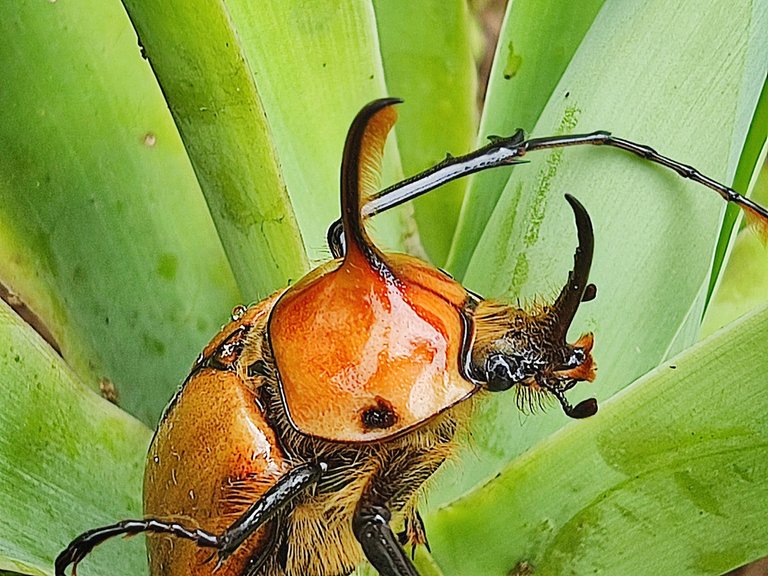
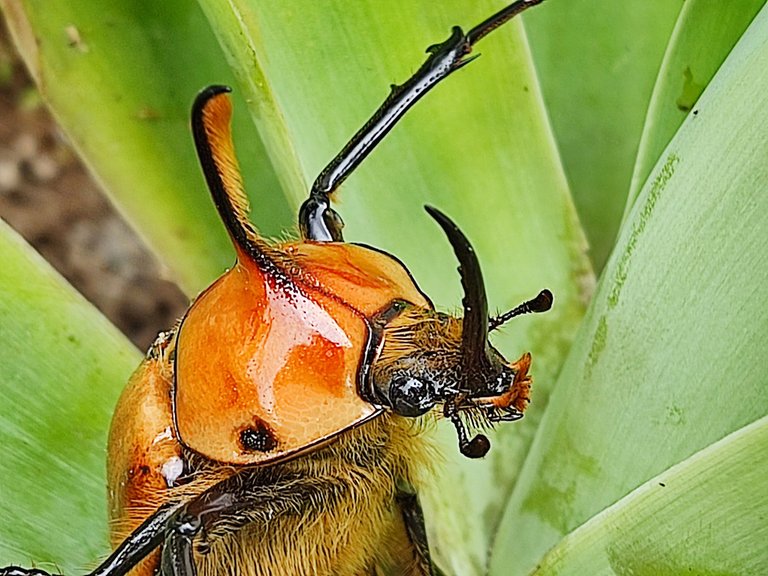
Like all living things, this beetle appealed to its survival instincts and stayed still. I couldn't miss the opportunity and photographed it. I think he liked it 😁.

When he felt safe, he started to move and got off the plant. Slowly, the beetle began to walk across the garden ground, making his way through the grass with his front horn.

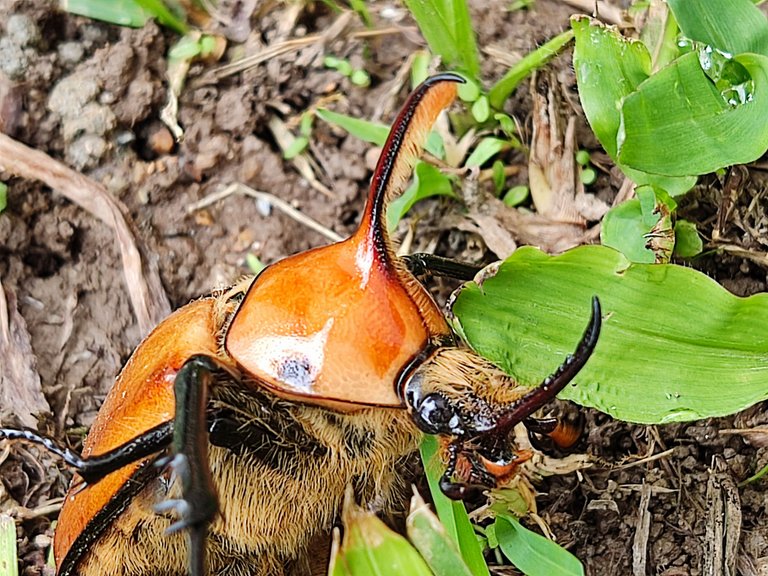
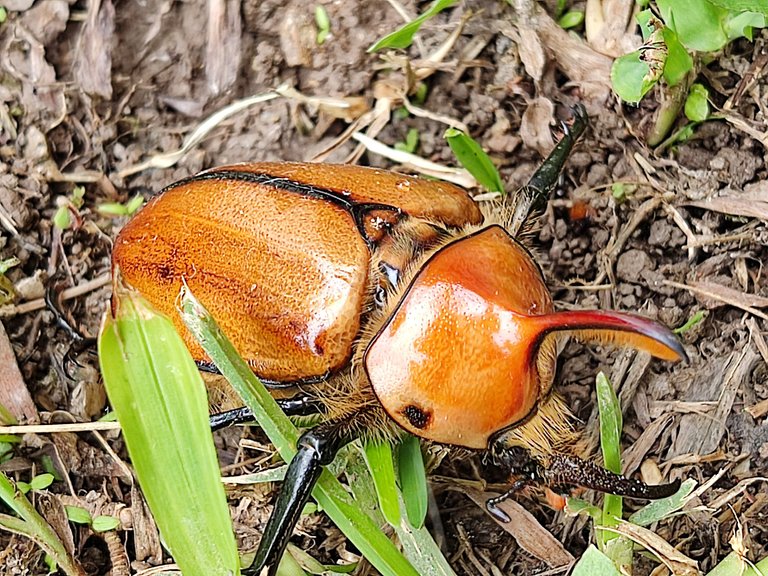
I let it go into the grass and continued on my way, happy to have been lucky enough to find such a beautiful specimen.

I thought that this wonderful encounter had ended there, but destiny had prepared for me a new encounter with this rhinoceros beetle. It was only a couple of days later, when just a block from my house near the wooded area, a girl found a rhinoceros beetle. I immediately wondered if it was the same one we had rescued a few days ago. If so, it seemed to me that it had traveled a long distance but was exposed to being stepped on by a car or damaged by stray dogs or cats... this was crazy!
In the first instance, the girl left it on the surface of a log.


As I approached this beetle and observed it closely, I realized that it was another specimen and not the one we had rescued in the garden of my house. How did I know? Take a good look at the following photos, and I will explain them to you.
If you look at the front horn of this beetle, it is short. It was the one I found in my house.

In this second photo, we see the beetle that the girl found near the forest. As you can see, its clypeal horn (coming out of the head) is longer almost the same height as the second horn located on the dorsal part of the insect (pronotum).
Both beetles are male as their slightly curved, backward inclined horn is characteristic. Females do not have a horn but instead have a conical protuberance. In addition, the males in this genus of beetles are brownish-ochre in color. These beetles have already reached adulthood. To have this appearance they are at least 2 years old or older.


As I do with every plant or animal I meet on my way, I took the opportunity to take a photo session of this second rhinoceros beetle and enjoy all its splendor.
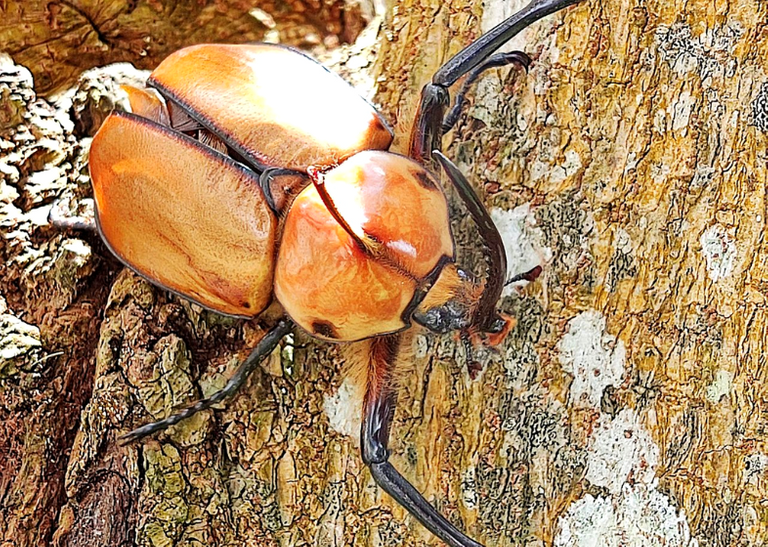
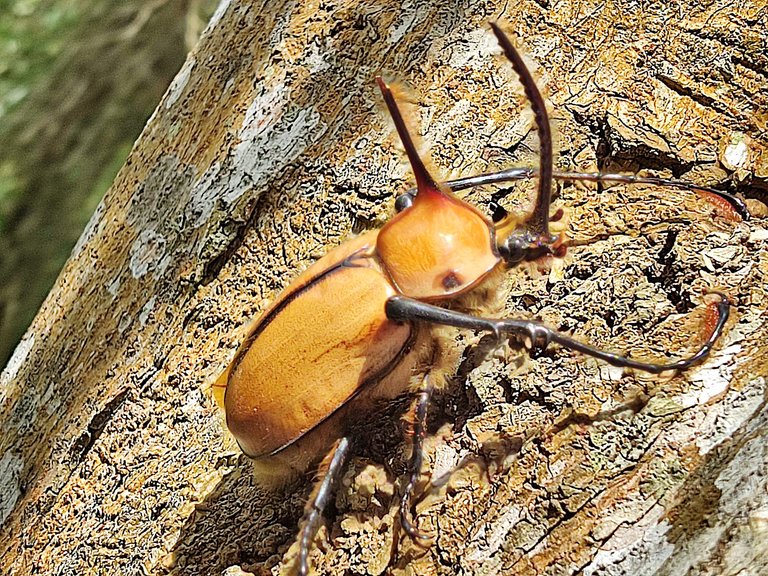
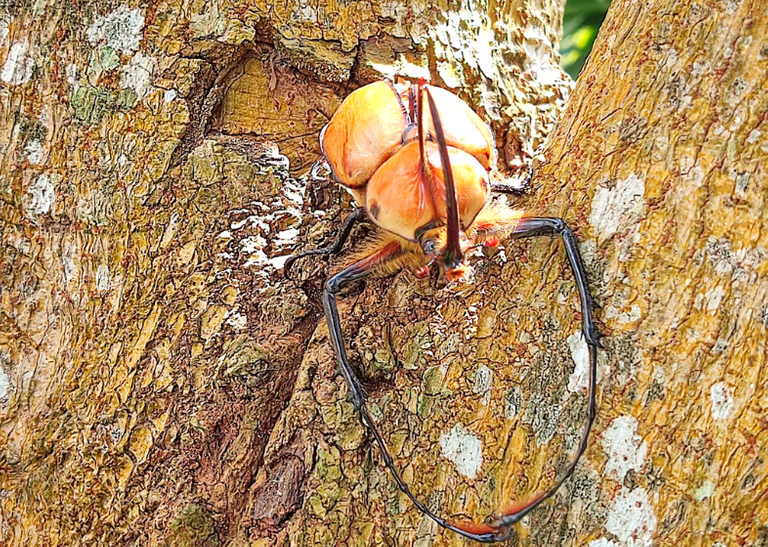
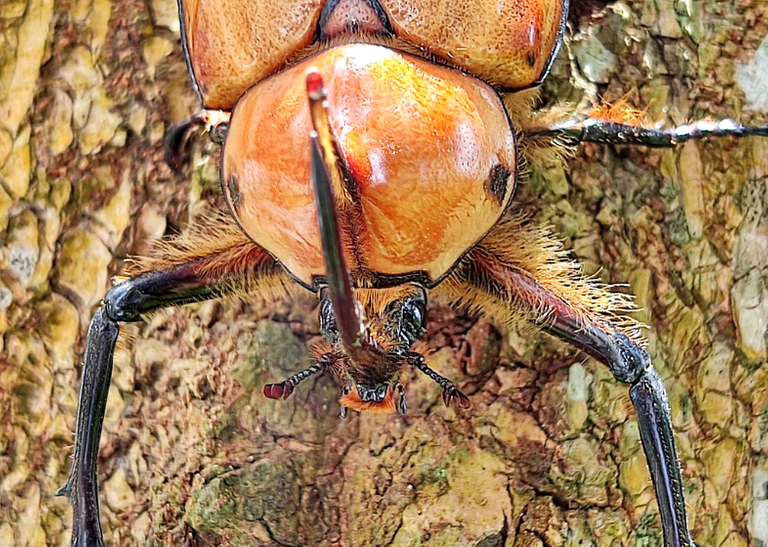
The structure of this insect is very striking. Its two upper wings (elytra) are hard, making a protective shell for the lower wings. The upper wings have a special sheen that resembles varnished wood. Nature has something that never ceases to amaze me.
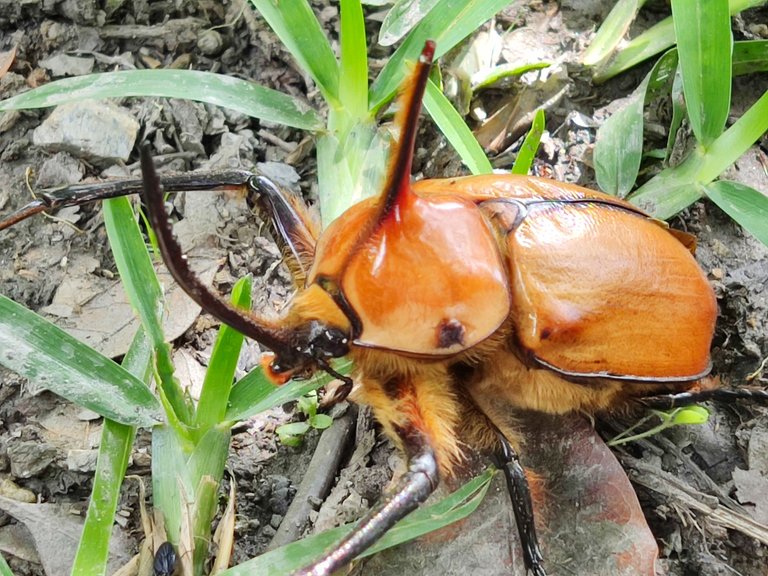
Their front horn (clypeal horn or cephalic horn) is like a serrated sword. Some authors point out that beetles use their cephalic horns for tasks such as pushing objects in their way. However, when studying the behavior of these insects it has been observed that it is a structure that they use to fight with other males in the breeding season to mate with the female of the species. These horns are also a sexual attraction for females since they prefer to mate with males with showy and larger antlers. This being the case, the second beetle would be more attractive than the first one I found in the garden of my house 😅😅😅😅
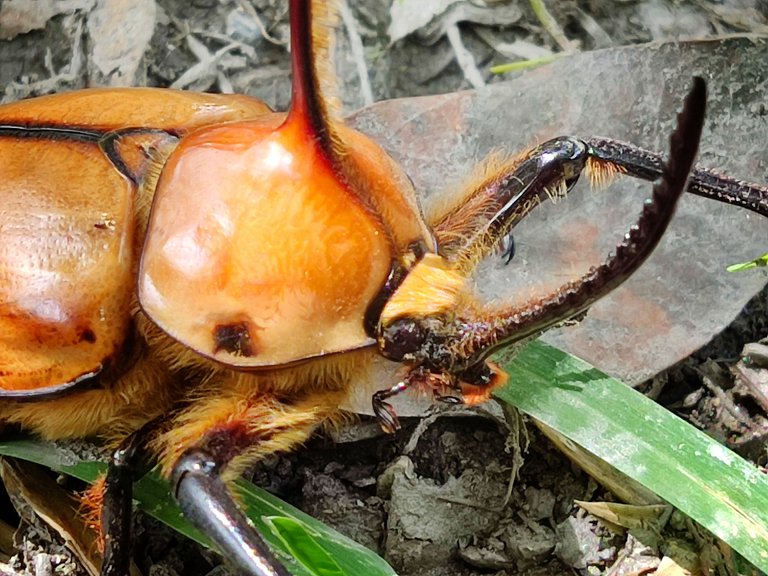
The secondary horn coming out of the pronotum or thorax is more vertical and thinner and has some yellow hairs.
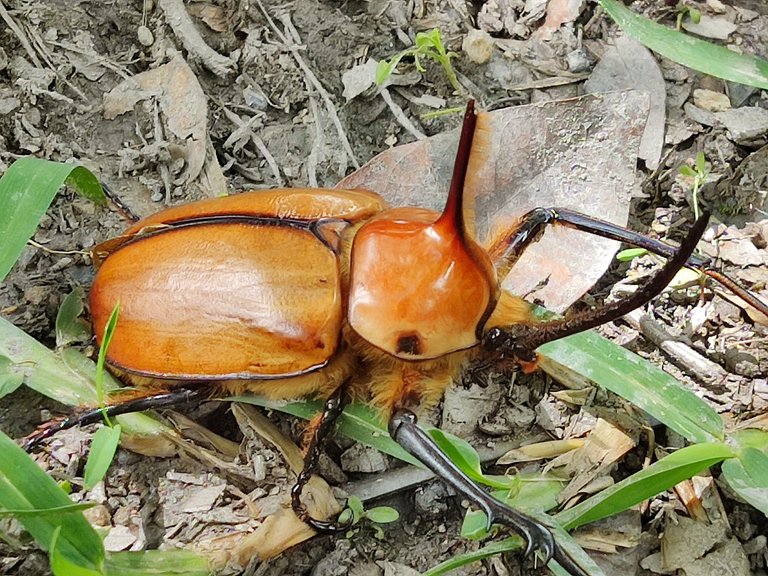


Luck was definitely on my side. I think the onset of the rains favored these two lucky encounters. Many areas and gardens are saturated with water, and these insects leave their natural habitat, looking for drier and safer surfaces. However, when they approach more urbanized areas, they run the risk of being harmed, decimating their population. Let's not forget that it takes at least a couple of years to find an adult beetle in nature.
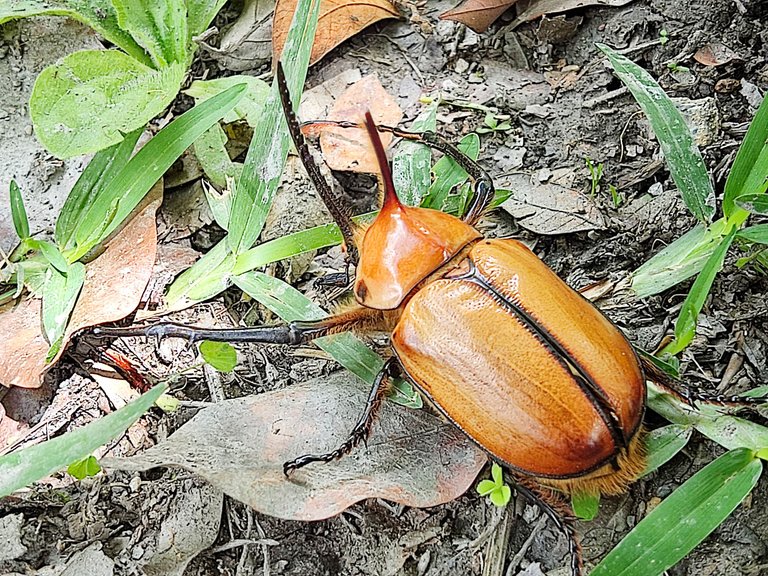
If you ever come across a specimen in areas that are not natural habitats, try to return them to their environment. This way, you guarantee their survival and protect the natural cycle of ecosystems established in nature to maintain balance.

All images are property of the author




